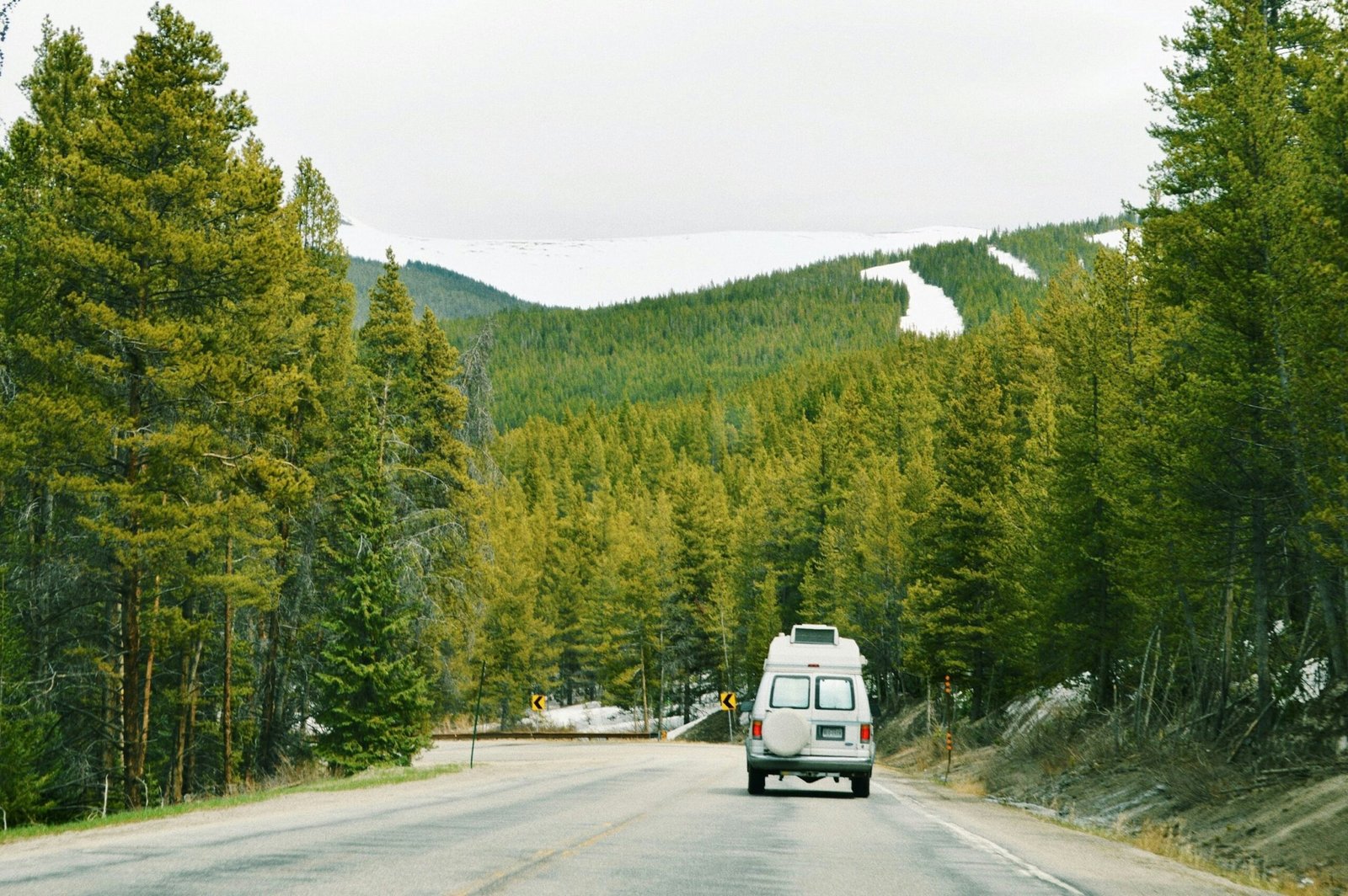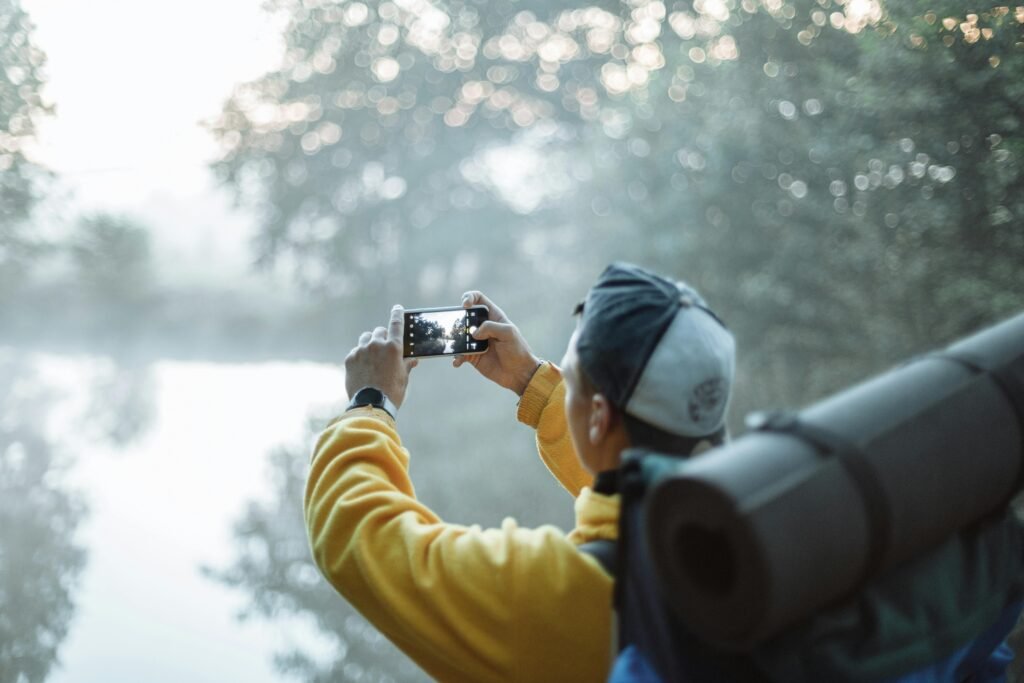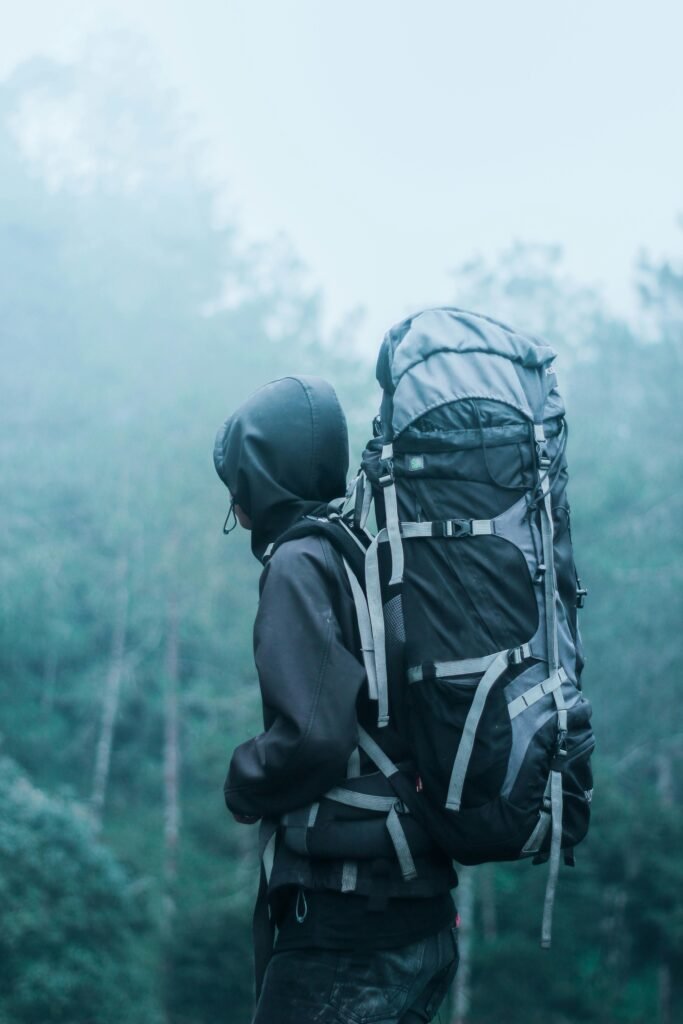Introduction: The Art of Saying ‘Yes’
Traveling often serves as a unique platform for personal growth, exploration, and adventure. Central to this transformative experience is the art of saying ‘yes’ to new opportunities and spontaneous adventures. Embracing this positive mindset encourages individuals to step outside their comfort zones, ultimately leading to unforgettable experiences. By adopting a ‘yes’ approach, travelers often discover that the most enriching moments occur when they are open to the unexpected.

When one decides to embrace spontaneity while traveling, it opens the doors to a myriad of experiences that might not have been considered otherwise. Whether it is participating in a local festival, trying an exotic dish, or engaging with locals in a foreign land, these spontaneous decisions create a deeper connection to the culture and environment. The power of saying ‘yes’ extends beyond mere acceptance; it involves a willingness to engage with the world fully and to welcome new challenges and narratives.
Every moment spent in exploration can become a poignant memory when approached with an open heart and a flexible mindset. It is in these unscripted moments that travelers frequently find themselves, with opportunities for personal development, forging new friendships, and creating lasting memories. The willingness to say ‘yes’ often leads to stories that significantly enrich one’s travel experiences, as it encourages exploration and the courage to venture into the unknown.
The essence of saying ‘yes’ is rooted in authenticity; it reflects an attitude that not only enhances the richness of the travel experience but also contributes to the traveler’s personal growth. By embracing spontaneity and being open to new experiences, one can transform a simple journey into a powerful exploration of self and surroundings. This approach ultimately paves the way for a travel adventure full of discoveries and learning opportunities, reinforcing the notion that life’s most rewarding moments often stem from saying ‘yes.’
The Benefits of Embracing Spontaneity
Embracing spontaneity while traveling can significantly enhance the overall experience, offering travelers numerous benefits that extend beyond mere enjoyment. One of the most pronounced advantages is the potential for unexpected opportunities. When one adopts a mindset of saying ‘yes,’ it allows for the discovery of hidden gems within a destination, whether it be a local café, an impromptu cultural event, or a chance encounter with fellow travelers. These unplanned experiences often lead to richer memories that become cherished stories shared long after the journey ends.
Furthermore, spontaneous travel fosters deeper interactions with local cultures. When travelers step out of their planned itineraries and engage with the locals, they gain insights that structured tours typically do not offer. This can lead to a greater understanding of the cultural nuances, traditions, and everyday life in the area. Whether it’s participating in a local festival, accepting an invitation for a home-cooked meal, or exploring off-the-beaten-path locations, embracing spontaneity can create moments of genuine connection that enrich one’s travel narrative.

On a psychological level, spontaneity can lead to reduced stress and increased happiness. Planning each detail of a trip can often become overwhelming, but allowing for flexibility alleviates some of that pressure. When travelers say ‘yes’ to the unexpected, they engage their creativity and open their minds, contributing to a sense of adventure and excitement. This spontaneous approach encourages individuals to focus on the present moment, enhancing their ability to appreciate the experience. Ultimately, embracing spontaneity while traveling not only cultivates memorable experiences but also promotes a more fulfilling and joyful state of mind.
Stories of Spontaneity: Real Experiences
Travel is often characterized by meticulous planning, yet some of the most memorable journeys stem from unexpected decisions. One traveler, Olivia, recounts her experience in the bustling streets of Bangkok. One evening, while exploring the vibrant night markets, she was invited by a local street vendor to join a small gathering celebrating the Thai New Year. Instead of politely declining, she embraced the spontaneity and said ‘yes.’ This decision led her to an unforgettable night filled with laughter, cultural exchange, and delicious traditional foods, transforming what could have been a solitary evening into a rich immersion in local culture. Such moments, which arise unexpectedly, contribute significantly to the allure of travel.
Another captivating story comes from Mark, who found himself in a remote village in Peru. After a long day of hiking the Inca Trail, he was approached by a group of local children inviting him to play soccer. Initially hesitant due to exhaustion, he decided to join them, resulting in an electrifying match under the setting sun. What started as a simple decision transformed his travel experience, forging connections that transcended language barriers and illuminating the heartwarming essence of community.

Similarly, Anna’s adventure in Italy stands out for its spontaneous charm. While visiting Florence, she serendipitously stumbled upon a street performance. Rather than moving along, she lingered, entranced by the music and the energy surrounding her. This moment led her to meet fellow travelers and locals, turning into an impromptu festival experience that enriched her perspective on Italian culture and hospitality.
These stories exemplify the enriching power of saying ‘yes’ to spontaneity while traveling. Embracing the unknown often reveals hidden treasures that structured itineraries cannot offer. Each anecdote not only underscores the magic of these encounters but also encourages other travelers to open themselves to possibilities beyond their initial plans.
Mindful Decision-Making: Knowing When to Say ‘Yes’
Traveling often presents a myriad of opportunities that can stir excitement and creativity. However, the decision to embrace spontaneity through a simple ‘yes’ requires a mindful approach. This mindset revolves around assessing opportunities, enabling travelers to choose paths that align with their values and ensure their safety. Mindful decision-making is not just about making choices but understanding the implications and potential outcomes of those decisions.
When evaluating an opportunity to say ‘yes’, it is crucial to consider one’s personal values and comfort levels. For instance, are you inclined towards adventure or more relaxed activities? Does the opportunity align with your ethical beliefs or the local culture? By reflecting on these aspects, travelers can make informed decisions that resonate with their true selves. Taking the time to evaluate each situation allows individuals to remain aligned with their principles while embracing spontaneity.
Moreover, assessing safety is a significant component of mindful decision-making. Travelers must consider their surroundings, the people involved, and potential risks associated with saying ‘yes’ to an unexpected invitation. It is essential to trust one’s instincts; if something feels off or raises concerns, it is entirely acceptable to decline. Implementing this level of discernment not only aids in ensuring personal safety but also enriches the travel experience by preserving genuine adventures without unnecessary complications.
Lastly, engaging in self-reflection after saying ‘yes’ can enhance future decision-making. Evaluating past decisions helps travelers learn which spontaneous activities brought them joy or aligned with their values, thus guiding them in future encounters. By cultivating a habit of mindfulness, travelers can embrace opportunities that contribute to their overall travel experience while ensuring they remain true to themselves.
How to Welcome the Unexpected in Your Journey
Embracing spontaneity while traveling can significantly enhance your experience, allowing for unexpected encounters and moments that create lasting memories. To cultivate a mindset that welcomes the unexpected, consider several practical strategies that can transform your journey.

One effective approach is to remain flexible with your itineraries. While having a plan can provide structure, sticking rigidly to it may inhibit the opportunity for serendipitous discoveries. Allow yourself the freedom to deviate from your original agenda. If you find a local festival, an intriguing café, or a captivating sight along the way, don’t hesitate to explore. Maintaining a loose travel schedule gives you the chance to experience genuine cultural interactions and hidden gems that may not be present in traditional travel guides.
Furthermore, keeping an open mind is crucial. Understand that not everything will go as planned. Delays, cancellations, or changes in weather can lead to unwanted stress if you resist them. Instead, view these situations as opportunities for adventure and growth. Interacting with locals can also enrich your travel experience; they often possess invaluable insights and recommendations that may lead you to unexpected yet rewarding destinations.
Additionally, consider intentionally leaving some parts of your journey unplanned. By doing so, you open yourself up to the possibilities that may arise from unanticipated changes. Engaging in activities that interest you, such as joining a local group or taking a spontaneous day trip, will keep your travel experience dynamic and fresh. Every moment of adventure contributes to your overall journey, creating stories that textbooks cannot provide.
Ultimately, welcoming the unexpected in travel not only broadens your horizons but also enhances your personal growth. Being open to the surprises that await will transform your trips into vibrant, multifaceted experiences.
Safety First: Embracing Spontaneity Responsibly
While the thrill of spontaneity can enhance travel experiences, it is imperative to prioritize safety. As travelers embrace new opportunities and adventures, assessing potential risks becomes essential. Before embarking on an impromptu journey or activity, individuals must consider the environment, local culture, and personal capabilities. Understanding the dynamics of a location can prevent hazardous situations, ensuring that the joy of spontaneity is not overshadowed by unforeseen dangers.
One effective strategy for maintaining safety is to conduct preliminary research. This entails gathering information about the chosen destination, including any prevalent safety concerns, emergency numbers, and local customs. Familiarizing oneself with local laws and regulations is also crucial, as it aids in navigating unfamiliar situations responsibly. Knowledge empowers travelers to make informed choices, balancing the thrill of spontaneous adventures with practical caution.
Moreover, communication serves as a critical component in ensuring safety while being spontaneous. Before engaging in spontaneous activities, travelers should share their plans with trusted individuals. This practice creates a safety net, allowing loved ones to stay informed about one’s whereabouts. Additionally, utilizing technology to share live location updates adds an extra layer of security, making it easier for others to assist in case of an emergency.
Another important aspect of safety is being attuned to one’s instincts. If a situation feels uncomfortable or risky, opting out is a prudent choice. Traveling with companions can also enhance safety; participating in spontaneous activities with others ensures that there are additional perspectives and support when navigating challenges. Integrating these guidelines into spontaneous travel endeavors allows individuals to fully enjoy the excitement of exploration while prioritizing their well-being.
Tips for Spontaneous Travel: Must-Have Essentials
Embracing the spirit of spontaneous travel requires not only a willingness to say “yes” to new experiences but also the right preparation to make those experiences enjoyable and stress-free. One of the key components to successful spontaneous travel is packing light. A well-packed suitcase should consist of versatile clothing items that can be mixed and matched, maximizing outfit possibilities while minimizing the weight of your luggage. A good rule of thumb is to select clothing made from breathable, quick-drying fabrics that can withstand different climates and activities. This strategy allows for easy incorporation of last-minute plans without being burdened by excessive baggage.

Staying connected while on the road is essential for spontaneous adventures. Ensure you have a portable charger for your electronic devices, as well as an unlocked smartphone compatible with international SIM cards, which provide flexible data options across different countries. This connectivity not only assists in navigating unfamiliar destinations but also enables you to discover unplanned activities or accommodations at a moment’s notice. Consider downloading helpful travel apps that curate real-time recommendations on local attractions, dining options, and even events happening nearby, streamlining the decision-making process.
Lastly, being adaptable is crucial when diving into spontaneous travel. This adaptability is greatly enhanced by maintaining a positive, open-minded attitude and occasionally stepping outside of your comfort zone. To ensure that you are prepared for any impromptu situation, create a small travel kit containing essential items, such as a first-aid kit, reusable water bottle, and basic toiletries. This not only helps in crisis management but also allows for more freedom and flexibility in your choices. By focusing on these essentials, saying “yes” to spontaneous travel experiences becomes a more seamless and rewarding endeavor.
Overcoming Fear and Inertia: The Mental Shift
Traveling often presents opportunities that can lead to enriching experiences and unforgettable memories. However, many individuals find themselves hindered by psychological barriers such as fear and inertia. Understanding and addressing these barriers is essential for those wishing to embrace spontaneity. The first step involves recognizing how fear of the unknown can hold one back from seizing travel opportunities. This fear often stems from a desire for security, which can lead to a monotonous routine. By acknowledging this fear, travelers can begin to challenge themselves to step outside their comfort zones.
Inertia plays a crucial role in this mental shift as well. It is easy to become complacent, following routines and familiar patterns during travels. This can result in missed opportunities for adventure and new experiences. To combat inertia, it is important to apply a proactive mindset. Travelers should actively seek out experiences that may initially seem daunting. For instance, accepting an invitation to explore a local festival or embarking on an impromptu hike can allow individuals to break free from their comfort zones.
Moreover, reframing the mindset regarding spontaneity is critical. Instead of viewing unexpected opportunities as potential sources of stress, travelers should see them as chances to enrich their journey. This mental shift requires practice and patience. Engaging in small acts of spontaneity—whether trying new foods or taking unwritten paths—can gradually build confidence. Such efforts help cultivate an attitude that readily embraces change, making the travel experience much more rewarding.
In conclusion, overcoming fear and inertia involves a purposeful mental shift. By actively challenging personal barriers and embracing spontaneity, travelers can unlock a world of possibilities, leading to a more fulfilling and enriching travel experience.
Conclusion: The Journey Awaits
Traveling is not merely about visiting new places; it is also about embracing the unexpected, cultivating connections, and finding joy in spontaneity. By saying ‘yes’ to opportunities that present themselves during journeys, travelers open themselves up to a world of possibilities. Each adventure, big or small, contributes to a richer tapestry of experiences that teaches resilience, adaptability, and a deeper appreciation for diverse cultures.
Indeed, the empowerment that comes from adopting a spontaneous mindset can transform a routine trip into an unforgettable journey. Whether it is accepting an invitation from a local to join in a traditional meal, participating in an impromptu dance, or exploring a hidden gem off the beaten path, these moments are what truly create lasting memories. Embracing spontaneity not only allows travelers to step outside their comfort zones but also invites a sense of adventure that continuously rekindles the wanderlust within.
As we venture into new cultures and environments, it is important to approach our travels with an open heart and a readiness to let go of plans and scripts. Each ‘yes’ yields stories that enrich our understanding of the world and ourselves. The journey awaits those who are willing to embrace the unexpected, who acknowledge that sometimes the best experiences come when we step into the unknown. So, as you prepare for your next adventure, consider this: every new destination holds the potential for greatness when we remain open to what it has to offer.
Let the spirit of spontaneity guide your travels. Embrace the power of saying ‘yes,’ and watch as your journeys unfold in remarkable ways.
